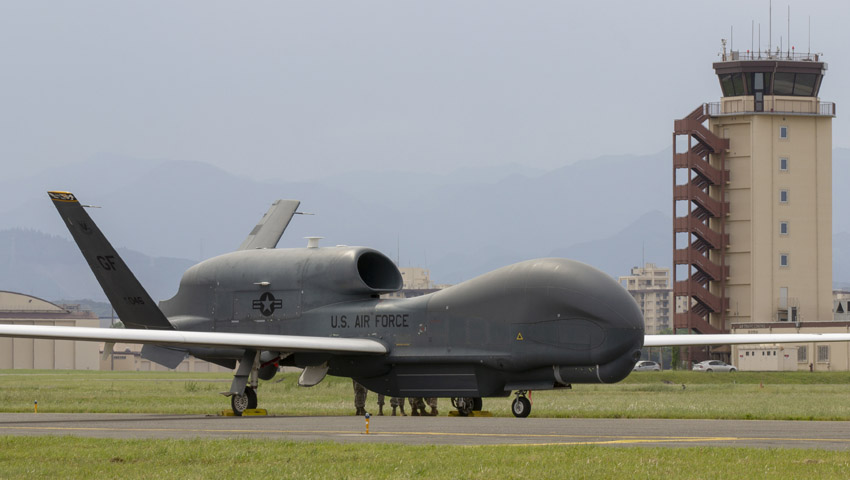Northrop Grumman has delivered a pair of sensors to enhance the capability of the US Air Force’s Global Hawk high-altitude, long-endurance autonomous aircraft system.
To continue reading the rest of this article, please log in.
Create free account to get unlimited news articles and more!
Enhancements include the deployment of the MS-177 multi-spectral camera system to provide additional high-resolution imaging capability for operational users. The second new capability is the first fielding of the increment 1 upgraded AN/ASQ-230 system on Global Hawk to meet expanded electronic threats.
The MS-177 camera system provides multiple channels of intelligence collection in visible and infrared bands and provides a dramatic increase in multi-spectral imaging capacity.
When paired with a Global Hawk platform, the MS-177 provides collection coverage in areas that cannot easily be reached by other means. Fielding of the AN/ASQ-230 increment 1 enhances Global Hawk’s support against electronic threats.
Leslie Smith, vice president of Global Hawk at Northrop Grumman, explained, “Ongoing improvements to Global Hawk underscore Northrop Grumman’s commitment to the United States Air Force’s ISR mission and reducing costs through agile development and leveraged solutions.”
Global Hawk’s combination of autonomy, range, endurance and payload, and an average aircraft age of under nine years, make Global Hawk a valuable asset for domestic and international customers with critical ISR collection requirements. The Centre for Strategic and Budgetary Assessments recently published a report highlighting the key role systems like Global Hawk play around the globe.
“New and improved payloads flying on our young, yet proven fleet of aircraft will allow our partners to deploy high value, networked assets to monitor adversaries while not risking the lives of military personnel well into the 2040s,” Smith added.
In the future, Global Hawk is uniquely positioned for additional missions that connect the joint force as one, including persistent high capacity backbone, pseudo-satellite communications coverage, and joint all-domain command and control.
The RQ-4 Global Hawk unmanned aircraft system (UAS) is the premier provider of persistent intelligence, surveillance and reconnaissance information. Able to fly at high altitudes for greater than 30 hours, Global Hawk is designed to gather near-real-time, high-resolution imagery of large areas of land in all types of weather – day or night.
Beyond intelligence collection, a portion of the Global Hawk fleet is engaged in supporting air and ground users with communications relay support. The EQ-4B Global Hawk carries the Battlefield Airborne Communications Node (BACN) payload providing life-saving support to warfighters.
Global Hawk has amassed more than 250,000 flight hours with missions flown in support of military operations in Iraq, Afghanistan, North Africa, and the greater Asia-Pacific region. The system provides an affordable and flexible platform for multiple sensor payloads to be used together, delivering mission-critical information to various users around the world.
In active operation with the US Air Force since 2001, Global Hawk sees potential threats to allow commanders to gain greater understanding of an area of interest. These same intelligence-gathering capabilities also allow civil authorities greater ability to respond to natural disasters, conduct search-and-rescue operations and gather weather and atmospheric data to help forecasters predict the paths of storms.
Northrop Grumman's MQ-4C Triton UAS provides real-time intelligence, surveillance and reconnaissance (ISR) over vast ocean and coastal regions.
Based on the Global Hawk, Triton's autonomous operations are supported by land-based command and control mission planners and sensor operators.
Triton will be equipped with a unique and robust mission sensor suite that provides 360-degree coverage on all sensors, providing unprecedented maritime domain awareness for the US Navy and the Royal Australian Air Force.
Stephen Kuper
Steve has an extensive career across government, defence industry and advocacy, having previously worked for cabinet ministers at both Federal and State levels.

 Login
Login








